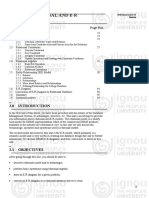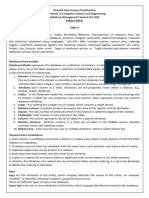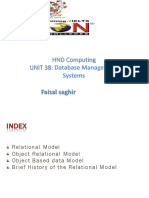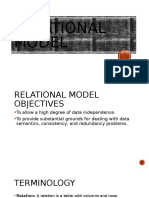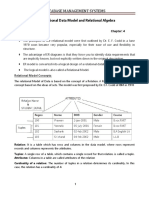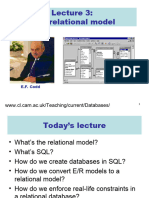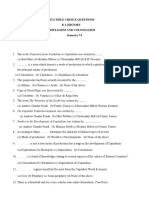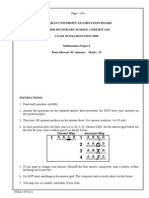0% found this document useful (0 votes)
25 views31 pagesRelational Model
The document provides an overview of the relational model in database management, emphasizing the structure of data stored in tables, including concepts like primary keys, foreign keys, and relationships between entities. It explains key terminology such as tuples, attributes, domains, and the significance of maintaining data integrity through constraints. The document also illustrates these concepts with examples from a university database, detailing how to represent and manage relationships among different entities.
Uploaded by
Isuru AmarasenaCopyright
© © All Rights Reserved
We take content rights seriously. If you suspect this is your content, claim it here.
Available Formats
Download as PPTX, PDF, TXT or read online on Scribd
0% found this document useful (0 votes)
25 views31 pagesRelational Model
The document provides an overview of the relational model in database management, emphasizing the structure of data stored in tables, including concepts like primary keys, foreign keys, and relationships between entities. It explains key terminology such as tuples, attributes, domains, and the significance of maintaining data integrity through constraints. The document also illustrates these concepts with examples from a university database, detailing how to represent and manage relationships among different entities.
Uploaded by
Isuru AmarasenaCopyright
© © All Rights Reserved
We take content rights seriously. If you suspect this is your content, claim it here.
Available Formats
Download as PPTX, PDF, TXT or read online on Scribd
/ 31



